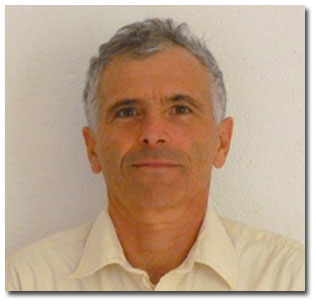|

This article is written by
Ed Malek
Masters in Counselling
Licensed Marriage and Family Therapist
|
A BRIEF HISTORY
OF ORGONE THEORY
Where do mental problems come from? The answers given
depend on one’s psychological theory. Most of what we
know about the mind originates from Sigmund Freud’s
psychoanalytic theory, which proved two major theorems:
there is an unconscious and sexuality influences it. I
will not address the behavioral or recent intellectual
theories as I feel they are more concerned with behavior
modification than with structural change.
Analysis works with the mind and the vehicle to
influence it--language. Certainly, analysts have not
discarded the emotions, and know that it is an important
component for cure (transference, insight with
catharsis.) But they have relegated the emotions to a
secondary position, and perchance this is a reason why
after many years in analysis, one is smarter, but not
necessarily better. In my opinion, talk has limitations
on three grounds: 1) talk can be empty, 2) not carrying
any affect, or 3) deceiving. I shall follow up on my
specialty, which is the second reason—having to do with
emotion.
Emotions uplift us to heights that are extolled in great
works of classic art, rightly pointing out the
connection to the heavens. Great religions swear their
hearts to the God in the cosmos. Are there truths to the
metaphor of love being otherworldly? It was with the
discovery of a specific biological energy by a
psychoanalytically trained scientist, that the origin of
emotions became know.
Wilhelm Reich, Freud’s student, was aware that not all
clients became healthy even when insights emerged in
therapy. The outcome was much better for those who were
in a satisfying love relationship, hence adding credence
to the libido theory of charge/discharge. Thus, the
libido had to be more than just a mental thought--more
like an energy that flows in the muscles and organs.
After scientific experiments with an oscilloscope to
test the movement of feelings in the body, and a
microscope to view simple life forms in motion
(e-motion), Reich objectified a bluish pulsating energy
that he called orgone. Much like the sun, it had life
positive properties including killing bacteria and
tanning the skin. In a (single-cell) amoeba, the energy
was in the cytoplasm (the fluid material that made up
the inner cell) behind the membrane. When the amoeba was
unimpeded, the cytoplasm moved back and forth,
concurrently pushing or withdrawing its pseudopods
(false feet). When disturbed/threatened, it shrunk into
a ball and remained so until the danger passed. Reich
observed that these were very simplistic emotions of
pleasure and unpleasure, and as a natural scientist,
regarded this pulsation applied to humans as well.
Other forms of even simpler life forms were examined
under the microscope, and they too had a bluish aura
permeating them, consequently leading to the discovery
of a radiating energy. With further experimentation,
this energy was found to be present everywhere,
including the cosmos, demonstrating that we are indeed
part of nature. We just behave differently than a cloud
or planet, since all biological life functions in a
self-limiting and self-organized manner (i.e. a cat
climbs, a salamander crawls, a human talks). It is
within our self-organization where psychological
problems lay, as trauma causes structural changes with
the flow of orgone. Acupuncture, the theory of chakras,
and yin yang are keenly aware of a blockage of life
energy, but it was Reich who measured it objectively.
In orgone therapy, the emotional and physical aspects of
the person are analyzed in order to identify the blocks
and work to free them. This work takes time and must be
done attentively, with the patient’s ego fully involved.
As Freud discovered, there is a strong resistance to
change; in orgonomy this simply means structured in the
muscles. To form a positive relationship with the
therapist and support the shedding of inhibitive
defenses, the second component of orgone therapy,
Character Analysis is used conjointly.
Character analysis analyzes a person’s character
structure via the way they behave and think. We all have
our character type stemming from the repression and/or
unsatisfaction of erogenous zone development during
childhood. Consequently, we all carry a specific “red
thread” that mediates everything within us, from
consciousness to habitual ways of acting. It is this
misguided and defensive red thread that is unveiled
during therapy, encouraging insight and collaboration
from a client who has experienced their personal truth. |
| |
|